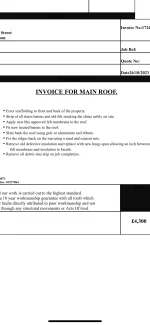You have reached the maximum number of views available on this site without registering.
You are using an out of date browser. It may not display this or other websites correctly.
You should upgrade or use an alternative browser.
You should upgrade or use an alternative browser.
Help - Damp patches in plastering on loft conversion roof - 2nd opinion
- Thread starter damploft
- Start date
Wayners
Well-Known Member
You have reached the maximum number of views available on this site without registering.
essexandy
The Lake Governor
You have reached the maximum number of views available on this site without registering.
Topspread16
Well-Known Member
You have reached the maximum number of views available on this site without registering.
Monkey Boy
Well-Known Member
You have reached the maximum number of views available on this site without registering.
Last edited:
You have reached the maximum number of views available on this site without registering.
You have reached the maximum number of views available on this site without registering.
Attachments
Monkey Boy
Well-Known Member
You have reached the maximum number of views available on this site without registering.
essexandy
The Lake Governor
You have reached the maximum number of views available on this site without registering.
essexandy
The Lake Governor
You have reached the maximum number of views available on this site without registering.


